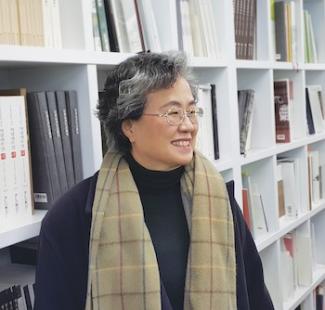Event

Jade color bisaek celadon is often said to draw the onlooker’s eye deep into the ceramic body, while moon jars of Joseon are associated with the feeling of warmth and generous spirit. Can a scientific analysis of broken ceramic pieces explain these phenomena? An inquiry into waste shards excavated at historical production sites tries to bridge the artistic macroscopic qualities of endeared masterpieces with the compositional microscopic properties of composition, microstructure, and firing parameters. The porcelain technology was imported from China at the end of Unified Silla and the beginning of Goryeo. The earliest production sites can be grouped into two main clusters, one in the southwestern coastal area around Gangjin and the other in the middle of the country around Gwangju. These two areas alternated as centers of production: Gangjin during the Goryeo dynasty for celadon, and Gwangju during the Joseon dynasty for whiteware. Between the dynasties emerged in many small kiln sites spread over the country the buncheong tradition that combined celadon and whiteware technology. Among some 350 sites known to have been active during the reign of Sejong, particularly notable are the Gyeryeongsan complex specializing in iron-painted porcelain and the Chunghyodong site which developed whiteware with an unusually high content of aluminum. In this talk, the technological features of several sites are examined and compared along with social and political factors for the dramatic shifts in the production sites that occurred during a millennium of Korean ceramics history.
About Carolyn Kyongshin Koh Choo (高慶信)
Born in Seoul, Carolyn Koh Choo studied Chemistry at Harvard College (BA, 1969) and the Massachusetts Institute of Technology (PhD, 1973). She taught physical chemistry and conducted analytical research on Korean traditional ceramics at Chung-Ang University from 1974 to 2007, serving as the dean of the School of Natural Sciences from 2003 to 2005. She was instrumental in establishing the Department of Science of Cultural Properties, a graduate-level program for the scientific study of traditional artifacts such as porcelain, glass, and dyed textiles. She has published the results of her work in academic journals, including Archaeometry, and wrote the entry for “Ceramics in Korea” in the Encyclopaedia of the History of Science, Technology, and Medicine in Non-Western Cultures (edited by Helaine Selin, Springer, online and in print 2008 and 2015). In her recent book, Traditional Korean Ceramics: A Look by a Scientist (Designnanoom, 2016), she discusses the compositional and microstructural properties of excavated shards along with their archaeological and artistic characteristics as well as the historical and cultural background of Korean and Chinese ceramics production.